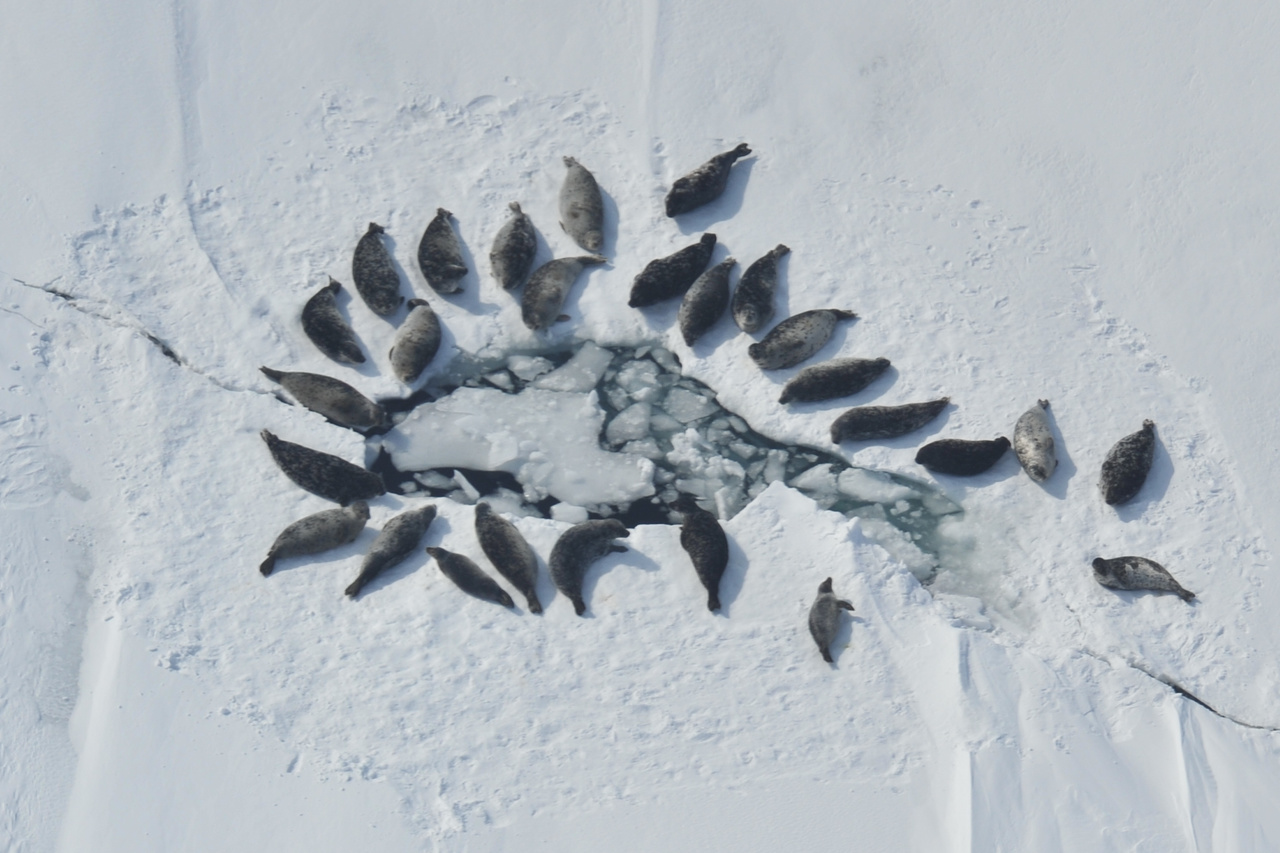Environmentalists seek Endangered Species Act listing for rare Alaska freshwater seals
A previous effort to list the seals foundered on questions of whether they were a distinct population. New research shows they are.

One of the world’s few populations of freshwater seals deserves Endangered Species Act protections, an environmental group has told the National Oceanic and Atmospheric Administration.
The seals of Alaska’s Lake Iliamna make up an “extraordinary” and distinct population of harbor seals, and they face “existential” threats, said a listing petition filed with NOAA’s on Feb. 6 by the Center for Biological Diversity.
Iliamna is Alaska’s biggest lake, and the approximately 400 harbor seals that live there have long been considered a “cryptic” population, with many unanswered questions about its migratory behavior and use of resources.
Chief among the threats to the Iliamna seals, the listing petition said, is the proposed Pebble Mine, a controversial project that would establish a massive open-pit copper and gold mine in the Bristol Bay watershed of southwestern Alaska. Bristol Bay, which opens into the Bering Sea, supports the world’s largest sockeye salmon runs, and the region holds state and national parks and wildlife refuges with salmon-eating brown bears and other iconic Alaska wildlife.
The mine plan includes a transportation system with industrial ferries crossing Iliamna Lake.
Climate change also threatens the Lake Iliamna seals, and the small size of their population puts them at risk for catastrophes like diseases, the petition said.
“The Iliamna Lake seal is in danger of extinction, or likely to become so within the foreseeable future, due to its inherent vulnerability as a small, isolated population, and ongoing, high-magnitude threats including climate change and the Pebble Mine,” the petition said.
This is the Center for Biological Diversity’s second attempt at winning an Endangered Species Act listing for the Lake Iliamna seals. A petition submitted in 2012 resulted in a status review, but NOAA ultimately decided in 2016 against listing. The agency, then in the final months of the Obama administration, determined that there was insufficient evidence that the Lake Iliamna seals constituted the legally required “distinct population segment,” and therefore did not qualify for listing.
But now new research proves that the Lake Iliamna seals are indeed distinct, the center said in its new petition.
A study published last year shows that the seals spend their entire lives in the lake ecosystem and do not migrate out to saltwater to join the much larger population of Bering Sea harbor seals.
The study, by scientists from the University of Washington, University of Utah and University of Alaska Anchorage, used isotope analysis of the seals’ teeth. They found that the seals eat fish in the lake exclusively; the chemical fingerprint matches freshwater food sources, not saltwater fish, according to the study.
The 2016 listing decision “was a close call on the science,” but now NOAA’s National Marine Fisheries Service is obliged to consider the new research that shows the Lake Iliamna seals make up a distinct population segment, said Kristin Carden, an oceans program scientist with the Center for Biological Diversity.
“We expect the National Marine Fisheries Service to Act consistent with its mandate in light of this new science,” Carden said by email.
Julie Speegle, a NOAA spokeswoman in Alaska, said the agency is reviewing the petition. It has 90 days to determine whether there is enough new information to warrant another review.
The Lake Iliamna seals are among five freshwater seal populations, all of them in northern regions.
The Baikal seals of Russia make up the biggest of those freshwater populations, with an estimated 54,000 adults, according to the International Union for Conservation of Nature and Natural Resources. The IUCN classifies that population as stable. The Baikal seals, which live in Lake Baikal, are related to ringed seals.
Other freshwater seal populations are considered vulnerable, and some of them extremely vulnerable. Climate change, habitat loss and pollution are cited as threats.
The Ungava seals of northern Quebec’s Nunavik region are classified as endangered and, according to the IUCN, have only 50 mature adults in their population. The Ungava seals and the Iliamna seals are the world’s only freshwater harbor seals.
The Saimaa seals of Finland, a subspecies of ringed seals, are classified by the IUCN as endangered, with only 135 to 190 mature individuals in the population. They live in Saimaa Lake, the largest lake in Finland, and depend on snow to make the lairs that protect their pups, and efforts to preserve the population include placement of manmade snow piles in the seals’ habitat.
The Lagoda seals of northwestern Russia, also a subspecies of ringed seals, are classified by the IUCN as threatened. They live in Lake Lagoda, the largest lake located entirely in Europe and, according to the IUCN, have 3,000 to 4,500 mature individuals in their population.